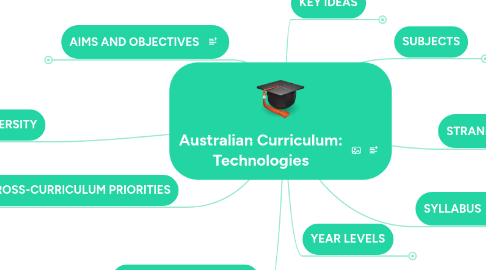
1. AIMS AND OBJECTIVES
1.1. Technologies
1.1.1. Investigate, design, plan, manage, create and evaluate solutions
1.1.2. Are creative, innovative and enterprising when using traditional, contemporary and emerging technologies, and understand how technologies have developed over time
1.1.3. Make informed and ethical decisions about the role, impact and use of technologies in the economy, environment and society for a sustainable future
1.1.4. Engage confidently with and responsibly select and manipulate appropriate technologies − materials, data, systems, components, tools and equipment − when designing and creating solutions
1.1.5. Critique, analyse and evaluate problems, needs or opportunities to identify and create solutions
1.2. Design and Technologies
1.2.1. Produce designed solutions suitable for a range of Technologies contexts by selecting and manipulating a range of materials, systems, components, tools and equipment creatively, competently and safely; and managing processes
1.2.2. Understand the roles and responsibilities of people in design and technologies occupations and how they contribute to society
1.3. Digital Technologies
1.3.1. Use computational thinking and the key concepts of abstraction; data collection, representation and interpretation; specification, algorithms and implementation to create digital solutions
1.3.2. Confidently use digital systems to efficiently and effectively transform data into information and to creatively communicate ideas in a range of settings
1.3.3. Apply systems thinking to monitor, analyse, predict and shape the interactions within and between information systems and understand the impact of these systems on individuals, societies, economies and environments
2. GENERAL CAPABILITIES
2.1. Literacy
2.2. Numeracy
2.3. Information and communication technology (ICT) capability
2.4. Critical and creative thinking
2.5. Personal and social capability
2.6. Ethical understanding
2.7. Intercultural understanding
3. STUDENT DIVERSITY
3.1. Students with disability
3.2. English as an additional language or dialect
3.3. Gifted and talented students
4. CROSS-CURRICULUM PRIORITIES
4.1. Aboriginal and Torres Strait Islander histories and cultures
4.2. Asia and Australia's engagement with Asia
4.3. Sustainability
5. KEY IDEAS
5.1. Overarching idea: Creating preferred futures
5.2. Project management
5.3. Thinking in Technologies
5.3.1. Systems thinking
5.3.2. Design thinking
5.3.3. Computational thinking
5.4. Information and communication technology in the Australian Curriculum
5.5. Safety
5.6. Animal ethics
6. SUBJECTS
6.1. Design and Technologies
6.1.1. Engineering principles and systems
6.1.2. Food and fibre production
6.1.3. Food specialisations
6.1.4. Materials and technologies specialisations
6.2. Digital Technologies
6.2.1. Practical opportunities
6.2.2. Digital solutions
